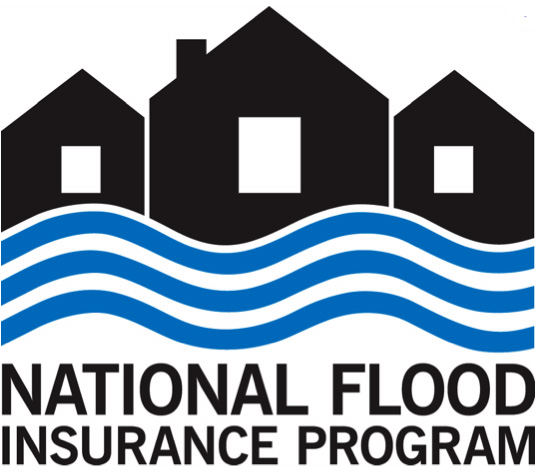That’s just slightly more than FEMA’s 2019 traditional reinsurance program renewal for the NFIP, which was $1.32 billion in size.
As we reported previously, FEMA returned to the traditional reinsurance market to seek firm orders and authorisations for its reinsurance renewal back in November.
The process is now complete and while the amount of reinsurance limit secured has not changed significantly, where it sits in the NFIP reinsurance tower has been adjusted.
We’re told some adjustments may have been a result of market conditions and some to make room in the tower for potential future capital markets backed reinsurance protection from another NFIP catastrophe bond. Adjustments have been made such that they would allow the cat bond market to be used to greatest effect, should FEMA return later this year, which is a sensible approach, we’re told.
For 2020 FEMA has secured $1.33 billion of one-year per-occurrence flood reinsurance protection from a panel of 27 international reinsurance companies.
That compares to the $1.32 billion of cover renewed in January 2019 from a panel of 28 private reinsurers.
The 2020 NFIP traditional reinsurance program will provide coverage for 10.25% of NFIP flood insurance losses between $4 billion and $6 billion, 34.68% of losses between $6 billion and $8 billion, and 21.8% of losses between $8 billion and $10 billion.
This is where the changes to the program have occurred, as last year the NFIP reinsurance covered 14% of losses are covered between $4 billion and $6 billion, 25.6% between $6 billion and $8 billion, and 26.6% between $8 billion and $10 billion for FEMA.
Given the changes in terms of where the reinsurance coverage sits in the NFIP tower, as well as generally higher pricing in U.S. property catastrophe reinsurance, the cost of flood reinsurance coverage has increased for FEMA in 2020.
This year FEMA has paid a total premium of $205 million for the coverage, where as in 2019 the reinsurance premium only amounted to $186 million.
The increase will certainly have been driven to a degree by market trends, as more of the coverage has now moved above the $6 billion flood loss event attachment mark.
FEMA began its reinsurance journey back in 2016, when the Agency tested the market with a small purchase of just $1 million of flood cover for the NFIP from September 19th 2016 running through until March 19th 2017.
This was followed with a January 2017 NFIP flood reinsurance placement covering a $1.024 billion layer of risk, supplied by a panel of 25 reinsurers and then in January 2018 FEMA purchased an enlarged and restructured $1.46 billion reinsurance placement, from a panel of 28 private market reinsurers.
FEMA then turned to the capital market for the first time, resulting in the successful placement of a $500 million FloodSmart Re Ltd. (Series 2018-1) catastrophe bond, which also represented the first multi-year flood reinsurance protection that the Agency had purchased.
It returned in January 2019 for the $1.32 billion traditional reinsurance renewal placement and then sponsored a second cat bond issuance with a $300 million FloodSmart Re Ltd. (Series 2019-1) transaction in April.
Now, the renewed traditional reinsurance program provides $1.33 billion of flood reinsurance to the NFIP, which added to the $800 million of still in-force multi-year FloodSmart Re catastrophe bond protection, gives FEMA $2.13 billion of flood reinsurance cover for the NFIP through 2020.
There is every chance that FEMA returns to the catastrophe bond market to extend that coverage in 2020, especially as ILS investor appetite for new cat bonds is currently strong and the Agency may find execution particularly attractive this year.
“It takes the whole community to prepare for disasters, and that includes participation from the private sector. Through reinsurance, FEMA partners with private markets to build a pillar that supports a sound financial framework for the NFIP by a meaningful transfer of flood risk,” David Maurstad, Deputy Associate Administrator of the National Flood Insurance Program commented.
FEMA’s 2020 NFIP traditional reinsurance placement was supported by the following markets:
- Allied World Insurance Company
- Antares (Lloyd’s Synd. No. 1274 AUL)
- Apollo (Lloyd’s Synd. No. 1969 APL)
- Ariel Re (Lloyd’s Synd. No. 1910 ARE)
- Ascot (Lloyd’s Synd. No. 1414 ASC)
- Brit (Lloyd’s Synd. No. 2987 BRT)
- Canopius (Lloyd’s Synd. No. 1861 CNP)
- Canopius (Lloyd’s Synd. No. 4444 CNP)
- Chaucer (Lloyd’s Synd. No. 1084 CSL)
- Faraday (Lloyd’s Synd. No. 0435 FDY)
- Hannover Ruck SE
- Hiscox (Lloyd’s Synd. No. 0033 HIS)
- Liberty Mutual Insurance Company
- Liberty Specialty Services Ltd. Paris o/b/o (Lloyds Synd. No. 4472 LIB)
- Managing Agency Partners (Lloyd’s Synd. No. 2791 MAP)
- Markel Global Reinsurance Co
- MS Amlin (Lloyd’s Synd. No. 2001 AML)
- Munich Reinsurance America, Inc.
- Navigators US
- QBE Reinsurance Co
- Renaissance (Lloyd’s Synd. No. 1458 RNR)
- RenaissanceRe Europe AG
- SCOR Reinsurance Company
- Swiss Reinsurance America Corporation
- The Cincinnati Insurance Co
- Validus Americas o/b/o Validus Reinsurance (Switzerland) Ltd., and
- XL Catlin (Lloyd’s Synd. No. 2003 XLC)
Reinsurance broker Guy Carpenter provided brokerage services to support the reinsurance placement, while rival Aon provided financial advisory services.













